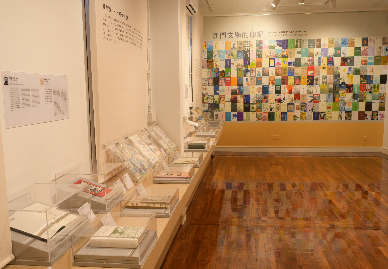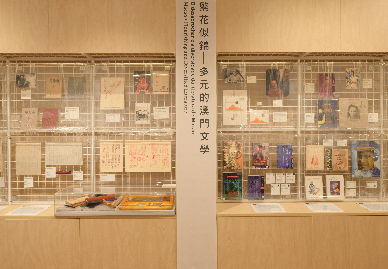Permanent Exhibit
During the Ming and Qing dynasties, writers and poets both at home and abroad visited Macao and celebrated its culture and customs. The prosperity of the city's literature in the last century and emergence of new generations of writers after the millennium has also injected new life into Macao literature, which would go on to shape a highly diversified and humane image.
This exhibition is an overview of the involvement of Macao literature, highlighting the most iconic Chinese and Portuguese poets, writers, literary societies, and journals. The "Wall of Book Covers", a symbol of the past, present, and future of the city's literature, is expected to showcase the power and vitality of Macao's literary heritage.
Exhibition Area A
Origin: Travelers by the Taipa Anchorage
Macao is the first place where Chinese and Western cultures met due to its historical and geographic advantages. During the Ming and Qing dynasties, Chinese and foreign writers and poets visited Macao one after another, either to stay or to travel. When facing unique scenery and culture, they couldn’t help but feel moved and wrote numerous poems and masterpieces to express their feelings and aspirations. Tang Xianzu, a great Chinese playwright, wrote a number of poetry depicting the city and its people's lives, such as The Peony Pavilion. Luís de Camões, an esteemed Portuguese poet of the 16th century, who traveled around the East, has long been one of the cultural symbols of Macao. Wu Li, a famous painter of the Qing dynasty, recorded his life there in poetry. Camilo Pessanha, a symbolist poet, came to Macao at the end of the 19th century, and created a poetry anthology entitled Clepsydra - his one and only collection that made him one of Portugal's most esteemed literary figures of modern times. The diversity of literary creations, though without interaction, has laid a solid foundation for future development of the city's literature.
Exhibition Area B
Macao's Flourishing and Diversified Literature
Chinese Literature
The 20th century saw Chinese, Portuguese, and Patuá (Creole used by the Macanese) literature in full bloom. Macao's local literature has since then begun to flourish. The emergence of Chinese literary societies, magazines, newspapers and other publications enabled writers to give full play to their talent. “Xueshe” (in the early 20th century) and "Red Bean" (in the mid-1960s) were among the most representative literary societies, publishing magazines such as the Shisheng (Voice of Poetry) and the Red Bean. F. Hua-Lin, a Macao poet, got recognition and was hailed as “the Trumpet of the Times” in Shanghai in the 1930s. He published a large number of modern poems and translations in mainland China, Hong Kong and Macao, marking the start of Macao literature going global. Established in the 1980s, the“Pen of Macau” marks a new milestone of the Macao's literature development, with its comprehensive literary magazine Pen of Macau well nourishing the local literary production. Today Macao's literature shows a thriving panorama with rich diversity.
Portuguese and Macanese (Patuá) Literature
Portuguese and Macanese (Patuá) literature are unique aspects of Macao's literature, reflecting its diversity in an all-round manner. The female writer Deolinda da Conceição paid close, compassionate attention to the fate of Chinese women. Henrique de Senna Fernandes expressed his longing for racial and cultural integration in his writings. The poet José dos Santos Ferreira insisted on writing in Patuá to express his love for Macao. Luís Gonzaga Gomes made contributions to cultural exchanges between China and Portugal by translating literary works. In addition, Portuguese and other foreigners, who lived in Macao either permanently or temporarily, have also contributed to the now flourishing literature in the region.
Exhibition Area C
Wall of Book Covers
A collection of colorful book covers showcases creations of representative Chinese and Portuguese poets and writers, as well as literary publications at different times of Macao since the 16th century. They are a symbol of the past, present and future of the city's literature.

